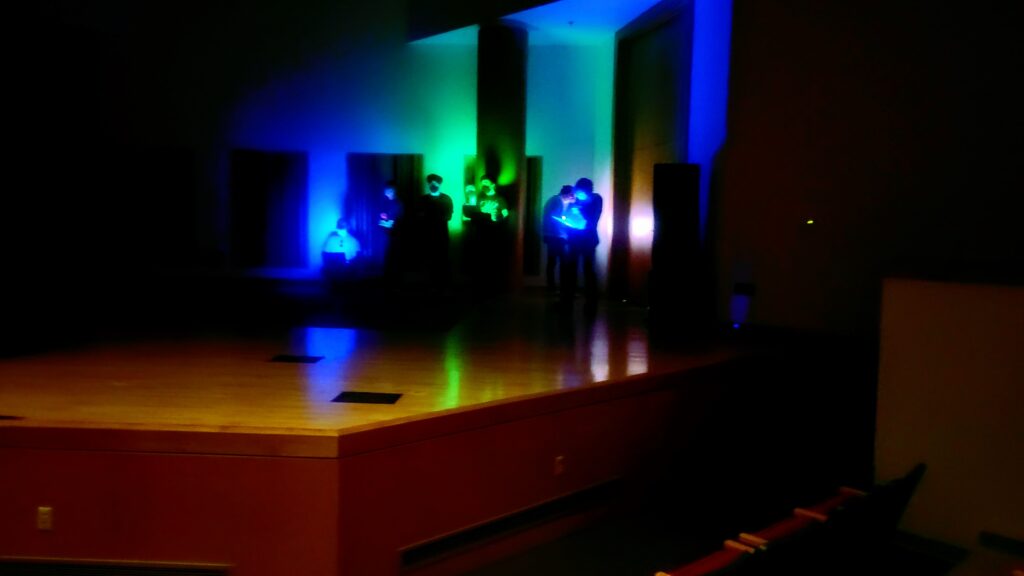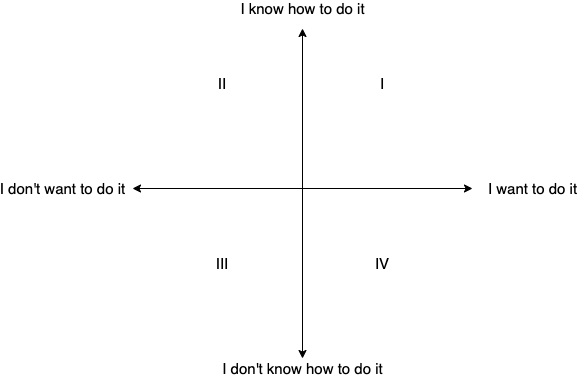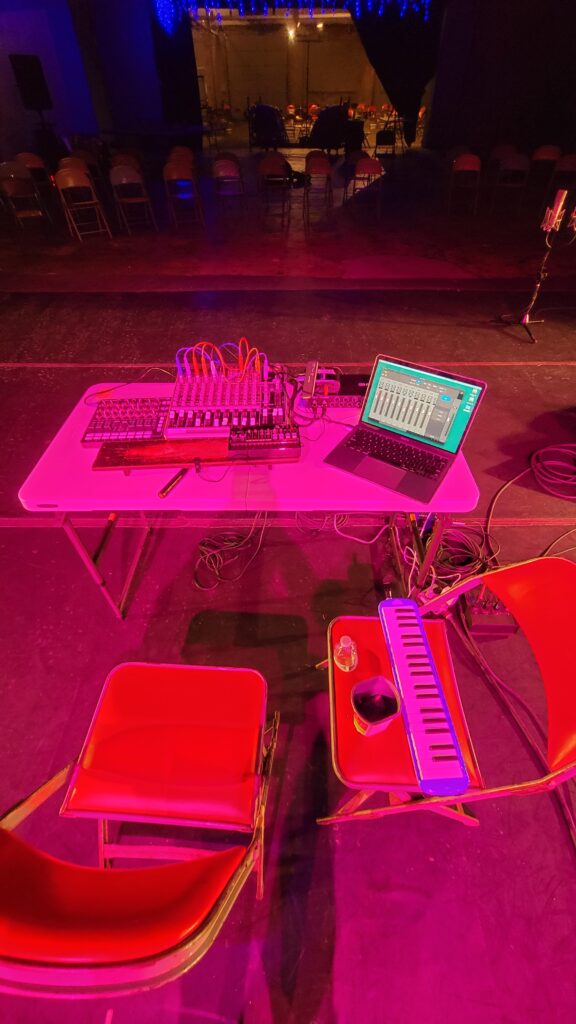Here are three pieces I have presented regularly with the Electronic Music Ensemble of Wayne State (EMEWS). The repertoire’s codes, scores, or DAW project files are available online and are simple to set up and execute in terms of technology. An ensemble director may make the piece presentable in one or two rehearsals with no extra cost for preparation or concert.
John Cage, Four6
Four6 is an open-instrumentation piece suited for four electronic musicians. The performer is asked to prepare twelve different sounds before the performance. Then, they play the sounds according to the timeline dictated in the score. There are no tech specifications (any instrument is acceptable), and performers do not need to know how to improvise or read a traditional notation or improvise.
I learned to play this at a concert organized by the fidget in 2012. Since then, the resulting sound of the quartet has been delightful to both the audience and the performer. In EMEWS concerts, the four parts were sometimes doubled to accommodate a large ensemble. The performers changed their twelve sounds for each practice and performance to keep surprising the other performers.
I don’t have a link to the score, but they are easy to purchase. A nearby contemporary music performer friend probably has a copy.
Alvin Lucier, Vespers
Vespers turns the acoustic space into an interesting instrument. I lead EMEWS to play this piece in the first weeks of the semester so the performers learn the musical application of space, resonance, and movement. The instruction asks the performer to walk around a dark room with a device that makes clicking sounds. The performer’s task is to find and share a location that makes the clicking sound interesting. In short, the performers become an organism with echo-location capacity. Any number of performers can play together.
The original instruction asks the performer to use a Sondol, but I don’t know what that is. So, I made a SuperCollider patch that makes clicks with controllable rates and duration. I added a feature to change the background color of the computer screen for an extra visual effect. I also thought a more directed performance might benefit the performers with little experience in experimental music, so I arranged a version with additional guidelines. The resulting scores and media are found here https://joowonpark.net/vespers/

Terry Riley, In C
Electronic ensembles can jump on the bandwagon by performing In C, one of contemporary music’s most popular ensemble pieces. For the electronic ensemble performers, I made a Logic patch that uses loop functions. Performers of any notation-reading level can play In C by clicking a loop at a desired pace.
Pre-programmed melody and rhythm, stored as loops, let the performers contribute different musical aspects. I ask my ensemble members to experiment with timbre. The performers can double the track with a different patch, change the filter settings, add effects, instrument settings, etc. They are to explore the uniqueness of electronic instruments – what can an electronic instrument do that others cannot?
Visit https://joowonpark.net/logicinc/ for detailed instructions. I am positive that a similar loop setup is possible on Ableton Live and other platforms.





